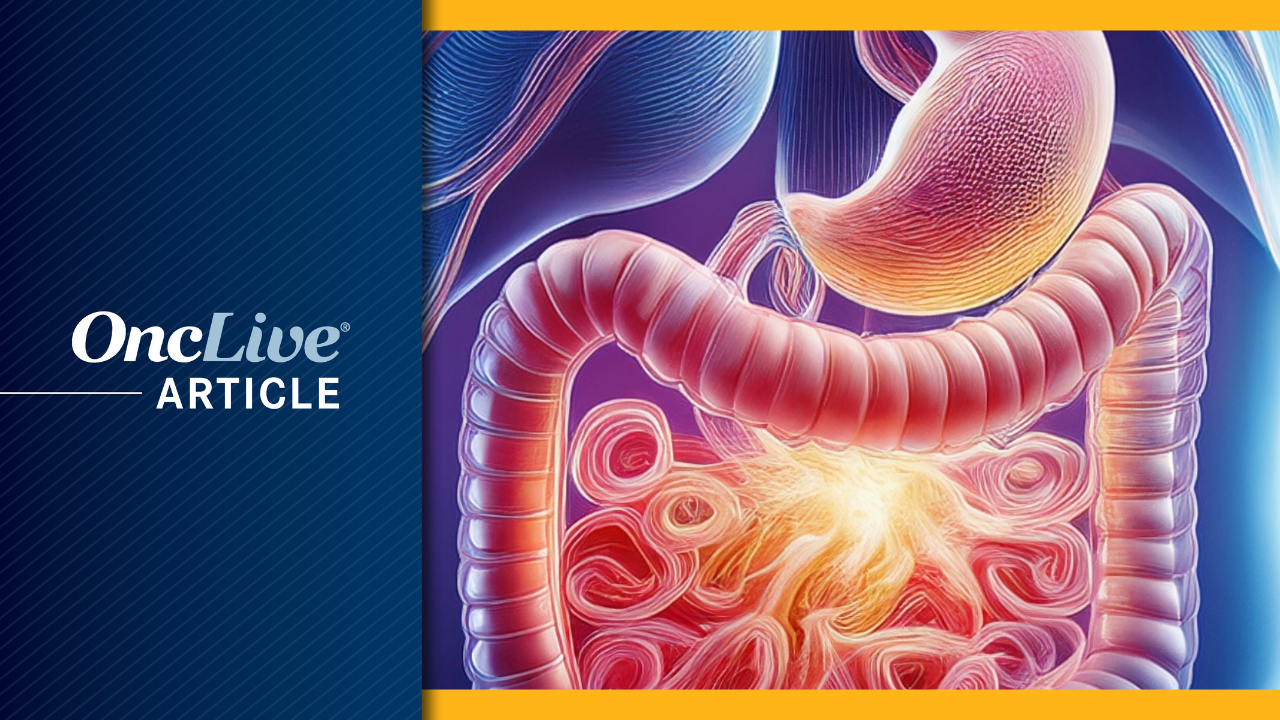The novel HER2-targeted antibody-drug conjugate (ADC) trastuzumab rezetecan (SHR-A1811) reduced the risk of disease progression or death by 78% compared with the standard combination of pyrotinib (Irene) plus capecitabine in patients with previously treated HER2-positive advanced breast cancer, according to findings from the phase 3 HORIZON-Breast01 trial (NCT05424835) presented at the 2025 ESMO Annual Congress.1
At an overall median follow-up of about 15.5 months, the median progression-free survival (PFS) by blinded independent central review (BICR) was 30.6 months (95% CI, 16.8–not reached) in the trastuzumab rezetecan arm compared with 8.3 months (95% CI, 6.9–11.0) in the combination arm (HR, 0.22; 95% CI, 0.15–0.34; P <.0001). The 12-month PFS rates were 84.7% vs 35.5%, respectively.
The median investigator-assessed PFS was 33.3 months vs 8.1 months, respectively (HR, 0.16; 95% CI, 0.10–0.25). Per the investigators, the 12-month PFS rate was 86.7% vs 36.0% in the experimental vs combination arms, respectively.
The median PFS benefit with trastuzumab rezetecan was upheld across all predefined patient subgroups. Of note, the benefit was sustained regardless of prior pertuzumab (Perjeta) treatment and regardless of the number of prior lines of therapy.
The overall survival (OS) data remained immature at the time of the data cutoff; however, there was a trend toward an OS benefit with trastuzumab rezetecan. The 12-month OS rate was 96.3% with the ADC vs 88.4% with the combination (HR, 0.31; 95% CI, 0.14–0.69).
“Notably, 50.3% of patients in the combination arm received an anti-HER2 ADC as post-study anticancer treatment, suggesting the initial trend we observed with the OS benefit [for trastuzumab rezetecan] might be meaningful,” said presenting author Erwei Song, MD, Sun Yat-sen Memorial Hospital, Sun Yat-sen University, Guangzhou, China.
The objective response rate (ORR) was 81.7% vs 55.9% in the ADC vs combination arms, respectively. The complete response, partial response, and stable disease rates were 4.2% vs 2.8%, 77.5% vs 53.15%, and 14.1% vs 31.0%, respectively. The disease control rate was 95% vs 86.9% and the progressive disease rate was 0.7% vs 9%, respectively. The median duration of response was 27.8 months vs 10.9 months, respectively.
The median treatment duration was 19.5 months for the ADC, 7.1 months for pyrotinib, and 7.5 months for capecitabine, indicating the ADC was well tolerated. Regarding safety, 13.4% of the ADC arm experienced serious treatment-emergent adverse events (TEAEs) vs 11.8% of the combination arm. The rate of discontinuations due to TEAEs was 4.9% vs 1.4%, respectively.
Song also noted that the majority of patients in the ADC arm had hematologic toxicities, with about 89.4% of patients experiencing neutrophil count decrease across all grades compared with 45.1% in the combination arm. He also noted that only 2.8% of the ADC arm experienced interstitial lung disease (ILD), including only 1 patient with grade 3 ILD.
“Trastuzumab rezetecan exhibited a significant PFS benefit and a strong trend in OS vs pyrotinib plus capecitabine in patients with HER2-positive advanced/metastatic breast cancer previously treated with trastuzumab and a taxane,” Song said.
What Was the Study Design of the HORIZON-Breast01 Trial?
The open-label, multicenter phase 3 HORIZON-Breast01 study enrolled 287 patients with HER2-positive unresectable or metastatic breast cancer who had prior treatment with a taxane and trastuzumab (Herceptin) in the advanced setting.
Patients were randomized to trastuzumab rezetecan (n = 142; 4.8 mg/kg IV on day 1 of 21-day cycles) or the combination of pyrotinib (n = 145; 400 mg once daily oral on days 1–21 of 21-day cycles) and capecitabine (1000 mg/m2 orally twice daily on days 1–14 of 21-day cycles). Treatment was administered until disease progression, patient withdrawal, unacceptable toxicity, or investigator decision.
The primary outcome measure was PFS per BICR. Secondary end points included PFS per investigator assessment, OS, ORR, duration of response, and safety.
What Were the Patient Characteristics in the HORIZON-Breast01 Trial?
The study enrolled 287 eligible patients with HER2-positive breast cancer between August 4, 2022, and August 9, 2024. The data cutoff date was June 30, 2025.
Across the overall study population, the median age was 56 years (range, 27–74), about three-fourths of patients had IHC 3+ HER2 status and the remainder had IHC 2+ and ISH+ status. Almost half of patients were hormone receptor-positive. About three-fourths of patients in the trial had visceral metastases and about 47% had more than 3 organs with tumor metastases. The ECOG performance status (PS) was evenly split between 0 and 1 in the trastuzumab rezetecan arm, while in the combination arm, 58% were ECOG PS 0 and 42% were ECOG PS 1.
The median number of prior treatment lines across all patients was 1 (range, 1–4). Most patients had received 1 prior line of therapy at 83.8% and 76.6% in the trastuzumab rezetecan and combination arms, respectively. In the experimental arm, 39.4% of patients had primary resistance to trastuzumab compared with 44.8% of patients in the combination arm. All patients had prior taxane therapy and all except 3 patients had prior trastuzumab. Three-fourths of patients overall had prior pertuzumab. Prior trastuzumab emtansine and endocrine therapy had been received by 4.9% vs 6.9% and 29.6% vs 28.3% of the 2 arms respectively.
In his concluding remarks, Song said “Trastuzumab rezetecan represents a promising practice-changing therapeutic alternative in this patient population.”


